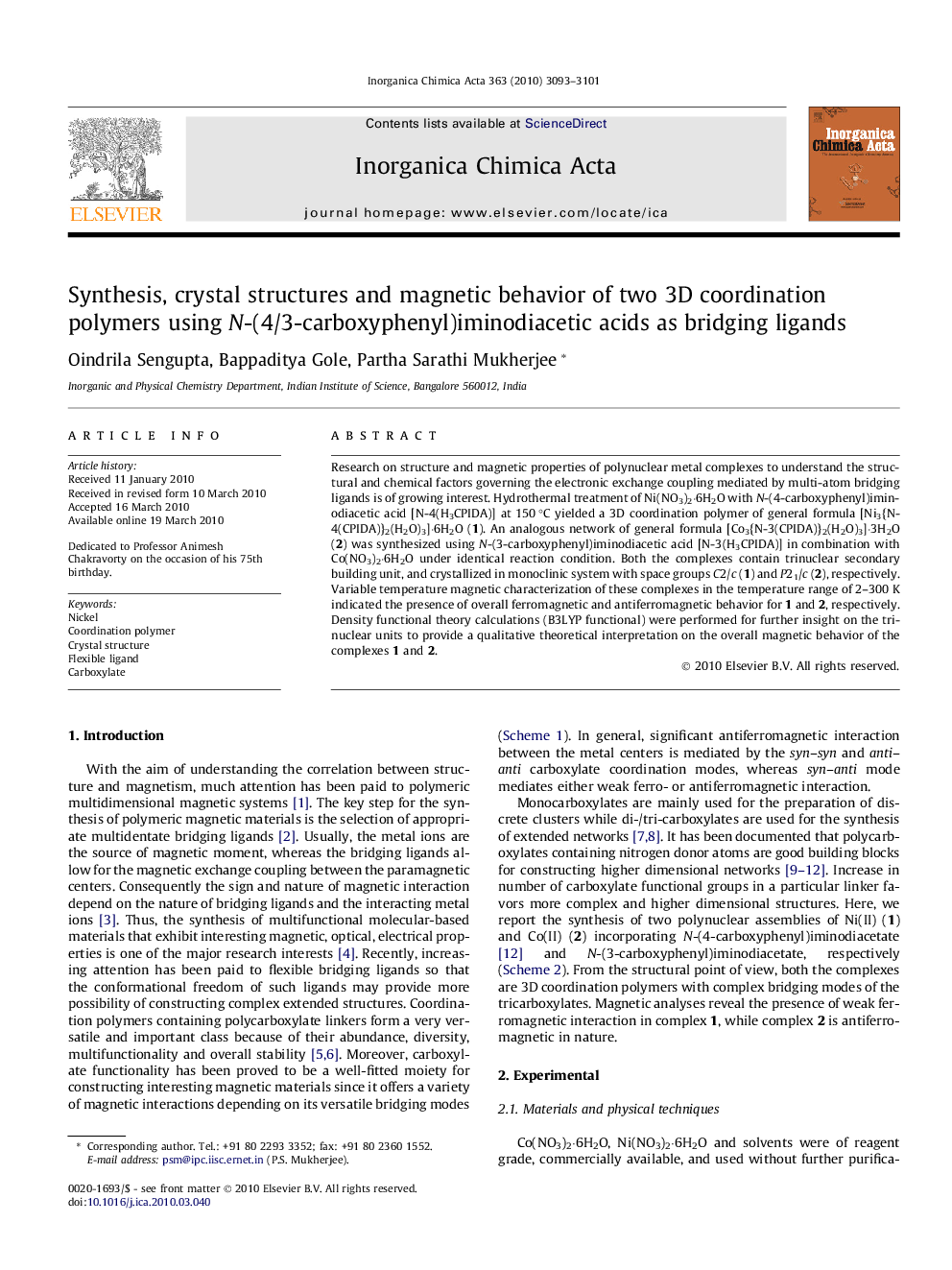| کد مقاله | کد نشریه | سال انتشار | مقاله انگلیسی | نسخه تمام متن |
|---|---|---|---|---|
| 1306928 | 975109 | 2010 | 9 صفحه PDF | دانلود رایگان |

Research on structure and magnetic properties of polynuclear metal complexes to understand the structural and chemical factors governing the electronic exchange coupling mediated by multi-atom bridging ligands is of growing interest. Hydrothermal treatment of Ni(NO3)2·6H2O with N-(4-carboxyphenyl)iminodiacetic acid [N-4(H3CPIDA)] at 150 °C yielded a 3D coordination polymer of general formula [Ni3{N-4(CPIDA)}2(H2O)3]·6H2O (1). An analogous network of general formula [Co3{N-3(CPIDA)}2(H2O)3]·3H2O (2) was synthesized using N-(3-carboxyphenyl)iminodiacetic acid [N-3(H3CPIDA)] in combination with Co(NO3)2·6H2O under identical reaction condition. Both the complexes contain trinuclear secondary building unit, and crystallized in monoclinic system with space groups C2/c (1) and P21/c (2), respectively. Variable temperature magnetic characterization of these complexes in the temperature range of 2–300 K indicated the presence of overall ferromagnetic and antiferromagnetic behavior for 1 and 2, respectively. Density functional theory calculations (B3LYP functional) were performed for further insight on the trinuclear units to provide a qualitative theoretical interpretation on the overall magnetic behavior of the complexes 1 and 2.
Two new 3D coordination polymers of Ni(II) and Co(II) have been synthesized using N-(4-carboxyphenyl)iminodiacetic acid and N-(3-carboxyphenyl)iminodiacetic acid, respectively, under hydrothermal reaction condition. Variable temperature magnetic studies in the temperature range of 2–300 K reveal the existence of overall ferromagnetic behavior for the Ni(II) analog, while the other one is antiferromagnetic.Figure optionsDownload as PowerPoint slide
Journal: Inorganica Chimica Acta - Volume 363, Issue 12, 15 October 2010, Pages 3093–3101